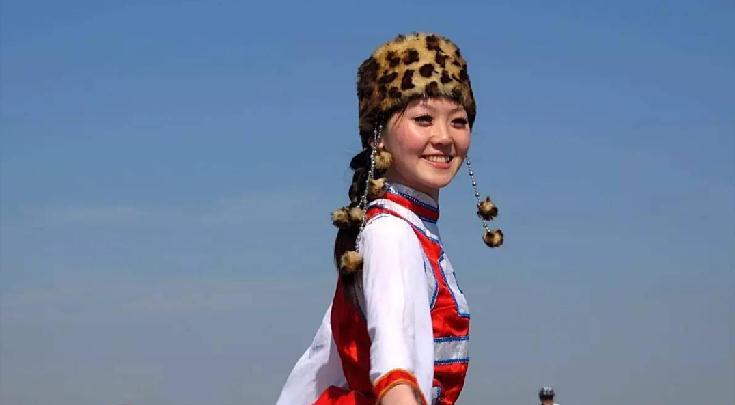Introduction: China has been invaded by ethnic minorities many times in its history, especially in the Song Dynasty, and ethnic minorities such as the Liao, Western Xia, Dajin and Mongols have risen successively. Among these ethnic groups, the Khitan people of the Liao Dynasty rose earlier and had a greater influence. So does this Khitan tribe, which once occupied half of the country, still exist today? If so, which nation does it belong to now?

The Eight Parts of the Khitan Dynasty
The origin of the Khitan tribe is controversial in the history books, but it is basically related to the Xiongnu and Xianbei. However, it can be confirmed that this ethnic group was a tribal alliance of half-farmers and half-herdsmen in the early Tang Dynasty. Initially subject to the Sheng Tang Dynasty, wu Zetian ascended the throne and carried out inhumane oppression of the Khitans. Therefore, the Khitan switched to the Turks and became hostile to Middle-earth from then on.
In 916, the 9th year of the fall of the Tang Dynasty, the Khitan tribe, under the leadership of Yelü Abaoji, successively unified the eight khitan tribes and subsequently established the Liao Dynasty.
The founding emperors often had abilities that were different from ordinary people, and this was the case with Yelü Abaoji. He vigorously recruited talents, regardless of nationality, as long as there were real talents and scholars, they were all reused. In addition, he was good at management, and he could also control and reform well all strata such as "workers, peasants, and merchants", so that the strength of the Liao Dynasty gradually increased, and it basically had the ability to dominate the world.
Therefore, after the development and growth of the Liao Dynasty, it officially began the invasion of Middle-earth. But if they want to enter the Central Plains, Yanyun Sixteen Prefectures have become their biggest obstacle. So in 936, the Liao Dynasty took advantage of Shi Jingyao's claim to the throne and forced him to cede the Sixteen Prefectures of Yanyun.
With sixteen states as a base, the Liao Dynasty was very labor-saving in expanding its territory, and it was not long before most of China, including the northeast and northern China, was included in the territory of the Liao Dynasty. At this time, the Liao Dynasty can be described as a surrender from all over the world, and its prestige is eightfold.
However, after the ming emperor of Yelü Apaoji, there were few ming kings. The increase in the number of emperors also represents the decline of the virtuous. Coupled with the gradual rise of The Jin Dynasty, the national strength of the Liao Dynasty began to decline, and many territories were annexed by the Later Jin Dynasty.
Although there was a Gestapo general Yelü Dashi in the later period, it was impossible to save the decline of the Liao state. In the end, under the attack of the Great Jin and the Southern Song Dynasty, the Liao State, which existed for 218 years, collapsed.
After the fall of the Liao state, the gestapo led the remnants of Yelü Dashi to establish the Western Liao in the western region. But after his death, the Western Liao rapidly declined, and was eventually suppressed by the rising Mongol Empire.
Where is the former hegemon, where is it now?
After the fall of the state, the Khitans continued to flee westward, all the way to what is now Iran. However, the Mongol iron horse was too fierce, and under the western expedition of the Mongol army, the Khitan tribe was also scattered by it, and it could no longer achieve scale.
In the nearly thousand years since then, the descendants of this nation have not only scattered everywhere, but also changed their names and surnames, and no trace of the past has been found.
Is this once glorious nation really completely extinct? Of course not. Many modern scholars have used methods such as DNA identification to find Khitan descendants.
In the end, it was found that the residents of Shidian County, Yunnan Province, China were basically descendants. Later, it was discovered that the Daur people in inner Mongolia were also descendants of him.
As for why the two places are thousands of miles apart, but Khitan descendants have been found, scholars speculate that it may be that some Khitans fled at that time and were forced to go south to the Yunnan region due to the Mongol Western Expedition. Those who did not have time to escape were captured by the Mongols and brought back, which is why there are Khitan descendants thousands of miles apart.
It has to be said that modern science and technology are changing with each passing day, and many mysteries throughout the ages can be solved by using high technology. Without DNA technology, relying only on historical records, it may be difficult to find the descendants of the Khitan people who were washed away.
And this also shows that although in the course of historical development, some nationalities seem to have disappeared, in fact, they are still tenaciously surviving or integrating into other ethnic groups.
Today, although the name Khitan has disappeared, their descendants continue to this day. The Chinese nation is a highly inclusive nation, no matter which ethnic group, as long as it lives on the land of China, it can live in harmony and beauty, work together and develop together.
References: History of Liao, History of Song, Old Book of Tang